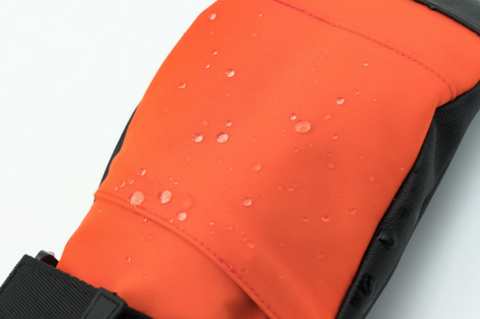
As my kids have been sporting their winter outerwear for over 3 months, I've noticed some stains and dirt building up on their clothes. Usually, I opt to wash their gear once or twice during the season, adjusting based on how much dirtiness I can tolerate. Yet, to guarantee that their gear remains warm, dry, and comfortable on the slopes, it's crucial to prioritize proper care and maintenance. In this guide, I'll share some tips on washing and caring for your and your kids' winter waterproof outerwear.
- Read the Manufacturer's Instructions: Before diving into the washing process, always check the care label on your outerwear. Different materials and constructions may require specific care methods. For Hootie Hoo’s outerwear, our care label is sewn into the inside side seam, looking like this:

- Pre-Treat Stains: If your kids like to roll in the snow and jump in the mud puddle, you will see visible stains on their gear. I found it best to pre-treat them before washing. Use a gentle stain remover or a mild detergent directly on the stained areas. Allow it to sit for a few minutes before proceeding with the washing process.
- Use powder detergent: When washing your winter outerwear, opt for powder detergent, especially the gentle ones that are specially formulated for technical fabrics. Avoid using liquid detergents, fabric softeners, or bleach, as they can potentially damage the DWR (Durable Water Repellent) coating and diminish the fabric's performance.
- Machine Wash with Care: Most waterproof outerwear can be safely machine washed, but it's essential to follow some precautions. Zip up all zippers, close Velcro fasteners, and turn the garment inside out before placing it in the washing machine. Use a gentle cycle with cold water (under 30°C) to prevent damage to the fabric and maintain the integrity of the waterproof membrane.
- Rinse Thoroughly: After the washing cycle is complete, ensure that your outerwear is thoroughly rinsed to remove any detergent residue. Residual detergent can affect the fabric's breathability and water-repellent properties. Run an extra rinse cycle if necessary or rinse the garment manually under cold water.
- Tumble Dry Low or Air Dry: Often, people think that drying outerwear in dryers will damage the garment. In fact, tumbling dry on low heat (under 40°C) can soften and redistribute the DWR (Durable Water Repellent) coating, helping to better protect the fabric against wetting out. It is essential, however, that you have a tumble dry low setting on your dryer because too high temperatures can risk melting the seam tapes and damaging the garment's waterproof performance. If you aren’t sure whether your dryer’s “Tumble Dry Low” setting is low enough, air drying will also do the job. Hang your gear to air dry in a well-ventilated area away from direct sunlight. Ensure that the garment is fully dry before storing it to prevent mold and mildew growth.

Conclusion: Taking care of your kids’ waterproof outerwear is crucial for maintaining its performance and longevity. By following these simple tips for washing and care, you can keep their gear in top condition and ready for their next snowy adventure on the slopes. So, gear up, hit the mountains, and enjoy the winter wonderland with confidence!
Claire
